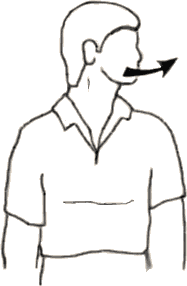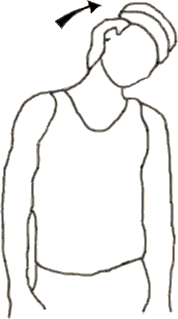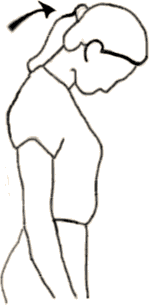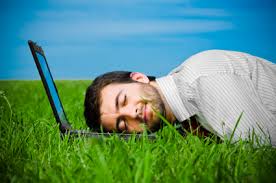Posts Tagged ‘movement’
 “Dance to your heart’s content.” – Doc Meek
“Dance to your heart’s content.” – Doc Meek
Image: Allison Cameron’s Classroom in Saskatchewan
You gotta have fun doing it!
I’ve always said that the brain requires body movement. I use the word “movement” because people groan when I mention the word “exercise” (including me!). 😮
And you have to use the form of movement that you love, or at least is fun.
Why do I have to exercise in a “fun” way?
So that you will keep it up every day (or almost every day) and keep your brain!
“…studies have shown that dancing actually reduces anxiety. In one study reported in Psychology Today, patients who suffered with anxiety were assigned to one of four classes: math, music, exercise or a modern dance class. Only those who took the modern dance class saw a significant reduction in their anxiety.”
– Becky Griffin in Deseret News at this link:
http://www.deseretnews.com/article/865626508/Are-youth-dances-outdated.html
Thank you, Becky Griffin!
Doc Meek, Sherwood Park, Alberta, Canada, Saturday, April 18, 2015
 “Walking daily helps everything!” – Doc Meek
“Walking daily helps everything!” – Doc Meek

Dr. Kenny Handelman (Image from: DrKenny.com)
ADHD Expert Spells it Out
I just received a newsletter from Dr Kenny Handelman, a Child and Adult Psychiatrist who has a private practice in Oakville, Ontario, Canada.
He said he is sometimes challenged with, “What is the best natural treatment for those struggling with ADHD?”
He says he knows of one natural treatment that:
– calms the nerves
-increases focus and concentration
– reduces stress and frustration
– helps you sleep better
Exercise is King
In my practice, I have always advocated body movement as an effective antidote for ADHD stress and frustration and lack of focus.
I call it “Body Movement” because many people have negative feelings about the word “Exercise.”
As Dr Handelman says, “It is not easy for a person with ADHD to exercise.”
So I always promote something that is fun and enjoyable that gets the body moving outside in the sun (or the rain!) and fresh air. If rain dampens your spirits, walk in the shopping mall! Leave your wallet at home. 😮
Walking helps Everything
A friend of mine was extremely sick, so sick he could not get out of bed. The doctors could not help him.
He said to his wife, “If I continue to lie here in bed, I will surely die here.”
He asked her to help him stagger forth with a cane.
He said he had learned over a lifetime that “walking helps everything.”
The first day he got only as far as half way down the driveway before he collapsed and his wife had to drag him back to bed.
Day two he got to the end of the driveway before he collapsed.
Would it surprise you to learn that he started to heal from his severe illness?
Walkin’ down the road
He now walks for several miles every day and is “healthy as a horse,” as they say.
He repeats to me, “Walking helps everything.”
And it certainly helps ADHD.
Kids (and adults) who are overwhelmed with a mental task, can take “time out” and move briskly (doing whatever) with the whole body for 20 minutes, and “bring on” several hours of concentrated mental activity. Wow!
Bounce on a mini-trampoline if you don’t like walking.
If you don’t want to bounce, and you can’t go outdoors, just run on the spot. Does wonders!
20 minutes!
Sweat a little. It will do you a world of good.
In more ways than one.
Thank you, Dr Kenny!
Doc Meek, Sherwood Park, Alberta, Canada, Tues, April 14, 2015
 “Exercise miracles.” – Doc Meek
“Exercise miracles.” – Doc Meek
 Exercise with Allison Cameron in her classroom in Park City, Saskatchewan, Canada…….
Exercise with Allison Cameron in her classroom in Park City, Saskatchewan, Canada…….
Exercise miracles outdoors/indoors
“Everybody” knows that exercise is good for you. And it takes effort so we don’t always make the effort.
My doctor friend tells me that vigorous physical movement is the best “pill” you can take! The “trick” is to find a way to make it somewhat enjoyable:
– get outdoors if that does it for you
– stay indoors if the weather doesn’t suit… or walk in the rain 😮
– exercise to music
– make it a timeclock challenge is some way that pleases you
– make it an endurance challenge in some way that pleases you
– make it anyway that works
Set low goals?
My doctor friend says don’t set high goals and quit. Set low goals, so you will keep it up. Keep going and get to where you need/want to be:
– start low
– go slow
– and don’t stop!
He says that exercise helps almost “everything.” Almost any physical problem or illness or disease can be helped by using movement because it stimulates and vivifies so many body systems and subsystems.
The brain also works better
with vigorous physical movement
Allison Cameron was teaching in Park City, Saskatchewan, Canada. The students could not focus or concentrate on schoolwork and their low marks showed that.
A fitness expert friend of hers said he would put treadmills in her classroom.
This didn’t work for some of the students until Allison herself got on the treadmill for 20 minutes before starting class. Then even the most reluctant pupils got on board.
The result?
After 20 minutes on the treadmill, with the heart rate up in the “training zone,” the students were able to concentrate and focus for 2-3 hours.
Critics said Allison was wasting class time
Of course critics abound whenever anything different is tried.
Allison persisted because she felt that “wasting” 20 minutes was better than wasting the entire class period.
Besides, the pupils got more work done in the next 2-3 hours after they exercised vigorously for 20 minutes than they did before during the whole school day.
Allison delighted as pupils’ marks shot up
The critics slowed down when the pupils’ marks in reading and math shot up.
Previously all of the students had been failing miserably.
Good job Allison! Good job trusty students!
Doc Meek, Sherwood Park, Alberta, Canada, Wed, June 18, 2014
P.S. Of course, not everybody can get treadmills in their classroom or their home.
No problem.
Any vigorous movement, outdoors or in, equipment or no equipment, will help the brain to focus and concentrate for hours.
Maximum benefit to the brain occurs when the vigorous exercise lasts 20 minutes and the heart rate reaches up into the “training zone.”
For simplicity’s sake, let’s say that the heart rate “training zone” is a heart rate that is at least 50%-60% higher than the resting heart rate.
Any fitness expert can refine this statement with a chart by age.
Doc Meek, the “brain fitness” expert. 😮
See previous articles on the
high value of exercise for
improving learning and marks:
“How Exercise Impacts Learning (Part I).” – Jane Wolff
“How Exercise Impacts Learning (Part II).” – Jane Wolff
Brains love movement and “take-a-break” music (plus sitting exercises & maybe even a “power” nap?)
 The learning brain needs “uprightness” for greatest efficiency
The learning brain needs “uprightness” for greatest efficiency
Human neurology thrives on color, movement, gentle music, and “uprightness” for the most efficient learning
The learning brain needs “uprightness,” in addition to color, movement and gentle music (discussed in my previous article, June 12, 2010). If you wish to review that previous article, just click on the title below:
A learning brain learns best with color, movement, and gentle music

What is meant by “uprightness” for most learning efficiency?
The ideal of “uprightness” occurs when the student is at a blackboard (greenboard).
The brain is so constructed neurologically that it is most efficient when the material to be learned is “above the noseline,” so to speak, as in the photograph above.
In other words, the best brain “registration” for memory occurs when the material to be learned is located above a line straight out from the students nose.
Why is “above the noseline” best?
We are not sure why. It seems that human neurology is arranged vertically, somewhat analogously to a vertical four-drawer filing cabinet.
(1) The top drawer registers and files visual material, the pictures we see with our eyes.
(2) The second drawer down registers and files auditory material, the things we hear with our ears.
(3) The third drawer down registers and files haptic material, the tactile sensations we encounter with our hands, and the rest of our body. It also includes the proprioceptive system, the internal sensations of the muscles, joints, tendons, and inner ear, that accompany body movement.
(4) The bottom drawer registers and files affective material, the emotions we feel in our “heart,” or “gut,” if you like.
Thus, when we are presenting visual material to students, and almost all of academic learning is visual (reading for example, or math worksheets, or whatever), we need to get as close as we can to the ideal of being “upright” at the blackboard (greenboard).
Some teachers have wall-mounted “Smart Boards,” connected to their classroom computers, and these follow the ideal even more than blackboards (greenboards). The student is “upright” before the “Smart Board,” the student is moving his hands to manipulate the material appearing on the “Smart Board,” it is in color, and presumably gentle learning “baroque” music could be added as background, although I have not seen this yet.
Voila! All the best items needed for best learning:
– Color
– Movement
– “Uprightness,” to provide material “above the noseline”
– Gentle “baroque” music (about 1 beat per second, or 60 beats per minute)
– Not to mention a caring teacher close at hand 😮
Yes! Caring!
Doc Meek, Thursday, June 24, 2010
At Sherwood Park, Alberta, CANADA; not at South Jordan, Utah, USA
P.S. Now the question becomes:
“How do we approach the ideal of “uprightness” when the student is seated at his or her desk?”
This is a good topic for a future article. This would ideally include the use of fairly steeply-sloping “drafting board” type desks, or barring that, simply using clipboards propped up on a stack of textbooks, or on the student’s upraised knee. Think about this. Use your imagination–your top drawer. 😮
 Brains love movement and “take-a-break” music (plus sitting exercises & maybe even a “power” nap?)
Brains love movement and “take-a-break” music (plus sitting exercises & maybe even a “power” nap?)
Photo from: www.lumosity.com/blog/benefits-of-power-napping/ …………………………………………………………………………………..
When was the last time we gave our brain a break?
We are not just talking about a weekend or a holiday here.
We are wondering if we have learned (yet) to give our brain a break, whether sitting at school or sitting in the workplace. Or sitting studying, or sitting working at mental tasks at home? How about working on the computer?
[ Or even just “potato couching” in front of the TV? 😮 ]
All that is needed is to stop our brain task momentarily, stand up, take several deep breaths, and “shake, rattle and roll,” using our best singing (or non-singing) voice if possible. 😮
If it’s a public place and elaborate physical displays are not appropriate, simply stand, take three deep breaths, stretch our arms to the ceiling, and sing silently to ourselves, eh? 😮
Or we might just have to stay sitting, take three deep breaths, wiggle our feet and hands under the desk, smile . . . lean back . . . smile deeply . . . and everybody will wonder what we’ve been up to. 😮
Add some “take-a-break” music (earphones if in a public place) and hey, we’re “up, up and away” with our brain! Like Superman or Superwoman eh!
What’s a “power” nap?
It’s a short nap taken during the day (right after lunch?), perhaps 10 to 20 minutes in length (not too long or you’ll wake up groggy). It’s purpose is to refresh our body and brain for the ongoing daily tasks.
You would think that if you are chronically sleep-deprived, this would be just the ticket. And it might be, dependent upon how sleep deprived you actually are. Sadly, if you are seriously sleep deprived the “power” nap may “backfire,” leaving you more groggy than you were before you took the nap. In this case, do something about your ongoing sleep deprivation overnight before your body or mind stop you with symptoms and illnesses of various kinds (physical and mental). Does this motivate you? Or not?
How about some simple “right-at-the-desk” stretches?
Exercises below from this website address (copy and paste into your web browser):
http://www.womensheart.org/content/Exercise/stretching_exercise.asp
Stretches for side of neck:
|
 |
Stretches side of neck
|
 |
Stretches back of neck
|
 |
Stretches side of shoulder and back of upper arm
|
 |


